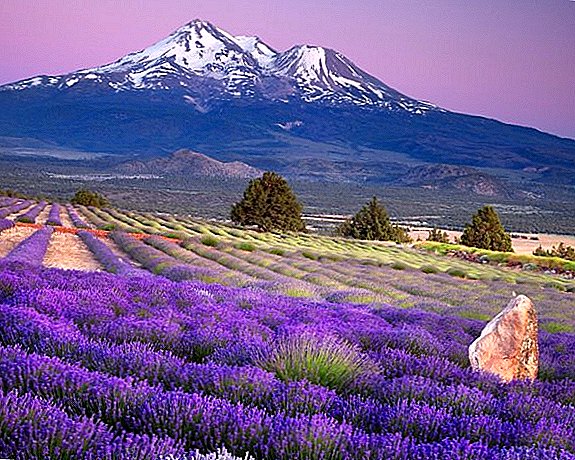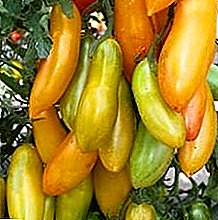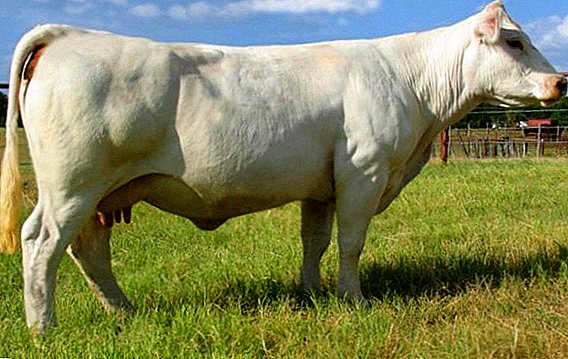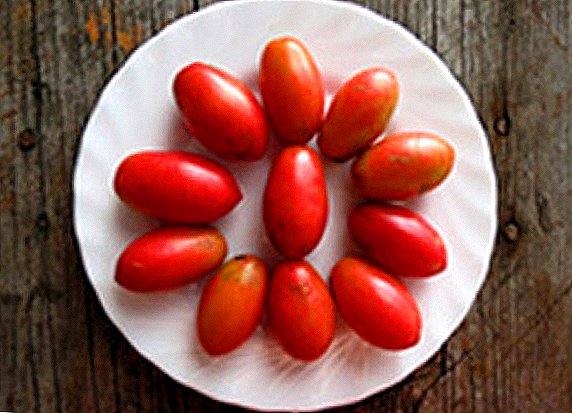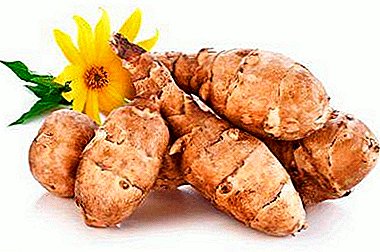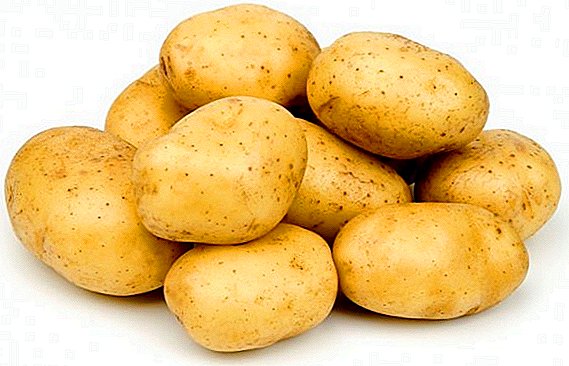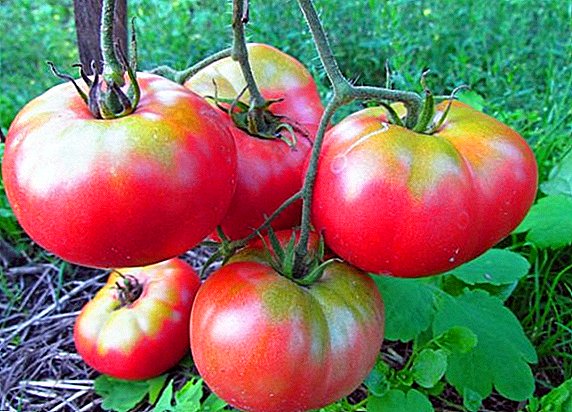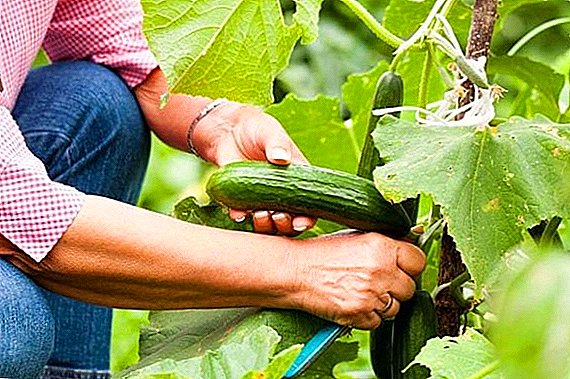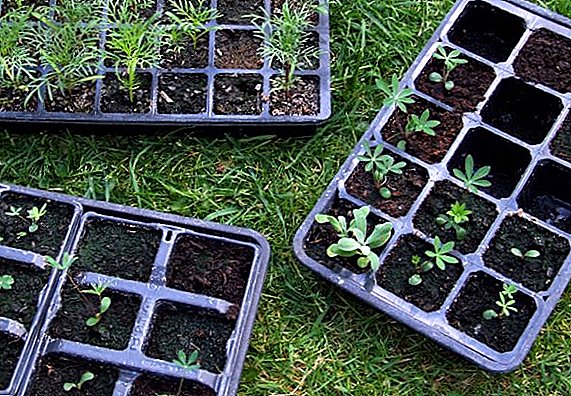 Most vegetables are grown by seedlings, which require a lot of small containers or special boxes. Today, to facilitate this process for gardeners, manufacturers have come up with special convenient cassettes for seedlings.
Most vegetables are grown by seedlings, which require a lot of small containers or special boxes. Today, to facilitate this process for gardeners, manufacturers have come up with special convenient cassettes for seedlings.
Cassettes for seedlings
Many dacha owners have already appreciated the advantages of sowing seeds in transplant cassettes in comparison with the “old-fashioned” methods. Moreover, today they can be selected in different sizes, shapes, and on any wallet. Manufacturers offer plastic, compressed cardboard and peat sowing tanks. 
Plastic
Plastic cassettes are usually made of polystyrene and PVC, and their main advantage is the possibility of reusable use, as they are easy to clean, and therefore saves money. The number of cells in such cassettes can be from 15 to 64, depending on the volume. Usually, drainage holes have already been made in all cells. If not, you should definitely make them at home. The kit often offers special plastic trays for seedlings and transparent covers to create a mini-hothouse. Most cassettes are made of black plastic, where the soil warms up faster, and they are more suitable for seedlings that are planted in open ground. But there are also white containers - in them plants receive more light due to reflection of it from plastic. As a rule, they are used for growing early seedlings. 
Did you know? Cucumbers sown on seedlings germinate in 3-7 days, sweet peppers - after 7-15 days, tomatoes - in 6-10 days, eggplants - in 5-10 days. The warmer the room and the higher the humidity, the faster you will see shoots.
The shape of the cells in these tanks for seedlings can be round, square and even conical, from which it is most convenient to get seedlings.
These tapes are best suited for city apartments, as they are compact, do not spoil the interior, are easily transported, and thanks to the pallets, the water does not spread over the window sill.
Paper

There are plants that very poor tolerate transplant and their roots are better not to disturb. One of the options for growing such seedlings are cardboard cassettes, which, as a rule, have from 4 to 10 cells. Before planting, the cells are easily cut and the roots of the seedlings are not damaged, so the plant will not get sick and will grow faster. In the ground, already separate cardboard cells decompose and do not harm the environment. Also, the paper provides good ventilation of the root system and has a relatively low price.
However, the choice of such cassettes is not as varied as plastic ones, and they need to be bought every year. If there are many seedlings, this method will be quite expensive. Another disadvantage is that when the excess water is present, the paper begins to decompose prematurely, the cells change shape and become covered with mold, which increases the risk of the fungus affecting the seedlings.
Important! When decomposing paper containers take a lot of nitrogen from the soil, so the plants need additional fertilizing with nitrogen-containing fertilizers, such as urea.
Peat

Cassettes of pressed peat, though more expensive than plastic and paper, but have a number of significant advantages:
- Decomposing, peat gives the roots extra nutrition
- Due to its porous structure air access to the root system is provided.
- The plant is not injured during planting, as it can not be removed from the tank
- Environmentally friendly material
What are the advantages?

The cassette technology of growing seedlings has a number of indisputable advantages, namely:
- Cartridges with pallets can be easily rearranged from place to place and transported to the landing site.
- There is no need to dive shoots, and this significantly saves time and increases the survival rate of seedlings.
- All plants are in equal conditions - they occupy the same space, they receive an equal amount of light and water, therefore the seedlings develop evenly.
- Due to the small space, the roots become more branchy.
- The risk of fungal infections is minimized.
- When planting, the plant is removed with a clod of earth and the roots are not damaged.
Are there any disadvantages?
Of course, like any other method - this one also has its negative sides. One of them is the rapid drying of the soil in the cells, since the tanks are rather small. And the second drawback is the way too expensive for large volumes of cultivation. But for small suburban areas, it is fully justified and deserves attention. 
How to choose a container for planting
When choosing cassette containers for seedlings, it is necessary to understand: which seeds will be sown there, be aware of the growth characteristics of the root system of plants, and have an idea when the seedlings will be planted out of their “houses”.
Did you know? Our grandmothers and grandfathers, who had not heard anything about the Internet, determined the dates for planting on church holidays. In the garden, no work was done before the Annunciation, even if it was warm outside, and the seedlings of tomatoes and peppers were planted in open ground only after St. Nicholas Day, which is celebrated on May 22.
Quality check
When buying plastic cassettes, first of all, pay attention to the smell - it should not be too harsh. The presence of a toxic odor indicates a violation of the production technology and the excess of the norm of harmful substances that will be released and go to the seedlings with water. The quality of plastic is determined by touch - too thin will quickly become worthless, so it’s better to buy 20% more expensive - in the end it will be cheaper. Products from serious manufacturers are packaged in a vacuum - check the integrity of the packaging. 
Size matters
Cassettes differ not only in material thickness and color, but also in size and number of cells. For different plants, cells of different shape and size are selected. For example, for early cabbage, strawberries, tomatoes, cucumbers, cells of any shape are better for 60-70 ml, for sweet pepper - conical and 30-40 ml high. The smallest cells are suitable for greens, leeks and bulb, various spicy herbs, late cabbage. Some manufacturers attach a table to their products, according to which you can choose the right cassette for a particular plant.
The general principle of choice is this: for plants that have roots growing deeper, you need high cells in the form of a cone, and those that have an extensive root system are wide.
How to use cassettes
In order to get healthy, beautiful seedlings from cassettes, you will have to adhere to some rules on the choice of soil, watering, maintaining the light regime, as well as adhere to the timing of planting and the seeding depth. 
Cassette Soil should be light and nourishing at the same time. You can buy ready-made mixture in the store specifically for seedlings. Such a substrate will be as balanced as possible in terms of the number of nutrients, the level of acidity and processed from pests and fungi.
Before starting work, the cassette should be washed well with soap or a solution of potassium permanganate. Fill the cells with soil before sowing by about 2/3 of the volume, so that later there is a place to pour the soil. Next, the container is covered with a lid or a film for heating the soil. While the soil is warming, they start preparing seeds - they are soaked in potassium permanganate, then in a growth stimulator or simply in water. 1-3 pieces are put into each cell. seed - in the future remains the strongest sprout. From above the crops are sprinkled on 1-2 mm with earth, moistened, covered and put in a warm place. Every day the lid or film is opened for a couple of minutes for ventilation.
Features care for seedlings in cassettes
After the emergence of seedlings cover removed from the cassette. It is necessary to protect even weak sprouts from drafts and direct rays of the sun. The earth in the cassettes dries faster than in the boxes, so its condition must be monitored every day. You can water it with warm distilled water from a syringe or spoon - it will be easier to control the amount of water. If possible, it is better to purchase drip irrigation for room seedlings or special mats of lutrasil, which is placed in a pan and moistened. Thus, the moisture enters the soil gradually. 
Important! Plant roots can grow into the mat. To prevent this from happening, it can be covered with a leaky, but dense material, such as a Chinese bag.
With the growth of plants and the appearance of leaves, it is necessary to gradually pour the ground and feed them with mineral fertilizers. The first time it is done on the 10th day after the sprout appears, the last - two weeks before planting.
Growing plants in seedling cassettes, do not forget to feed them with such mineral fertilizers: "Aquarine", "Kalimag", "Plantafol", "Criston", "Kemiroy" ("Fertika"), "Ammophos", "Signor Tomato", " Stimulus and Azofoska.Since the seeds are sown in the interval from the end of February to the beginning of April, when the day is still short, the seedlings need additional light. Best of all are fluorescent lamps or special fitolamps.
So, seedlings grown in cassettes are much stronger than from boxes, they take root faster in a new place, do not get sick, begin to bloom and produce a crop 2-3 weeks earlier. Cultures grown in this way have higher yields and are easy to maintain.


